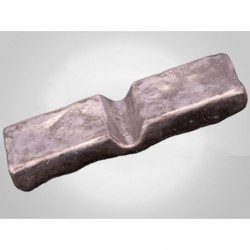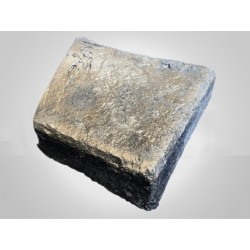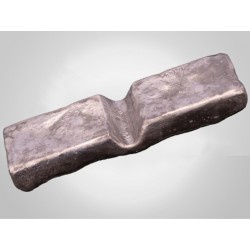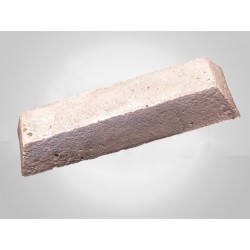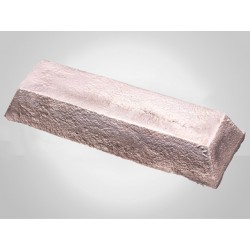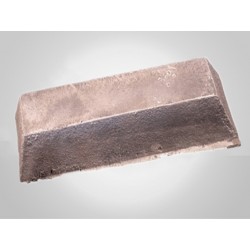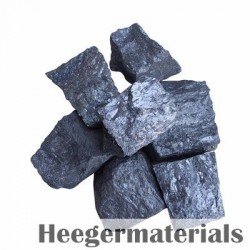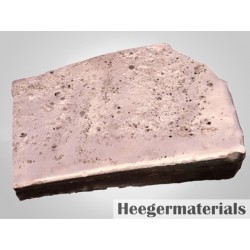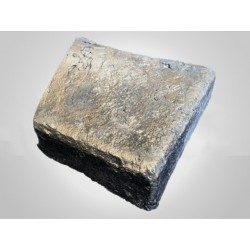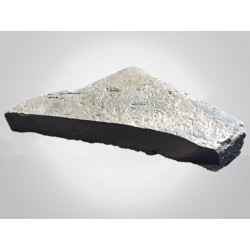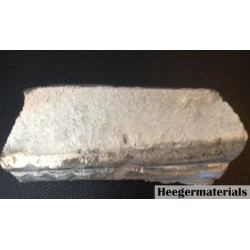Magnesium Based Master Alloy
- Products
- Deposition Materials
- Refractory Metals
- Rare Earth Materials
- Powder
- Technical Ceramics
- Lanthanum Hexaboride (LaB6) Materials
- Pyrolytic Boron Nitride (PBN) Products
- Boron Nitride (BN) Products
- Alumina Ceramics (Al2O3)
- Aluminum Nitride (AlN) Products
- Silicon NItride (Si3N4) Ceramics
- Silicon Carbide (SiC) Ceramics
- Graphite Products
- Zirconia Ceramic
- MAX Phase Ceramic Materials
- Boron Carbide Ceramics (B4C)
- Magnesium Oxide Ceramics (MgO)
- Quartz Ceramics
- Macor Machinable Glass Ceramic
- Beryllium Oxide (BeO) Ceramics
- Piezoelectric Ceramics
- High Purity Materials
- Precious Metals
- Chemicals
- Crystals & Substrates
- Applications
- Other
Magnesium Based Master Alloys are the lightest structural and hence suitable for application within the automotive industry, which has increased attention to vehicle weight and fuel economy. Magnesium alloys supported by the Mg-Al system are studied extensively to be used in vehicles thanks to the load savings they supply and also for their excellent castability.
Magnesium Based Master Alloys are the lightest structural and hence suitable for application within the automotive industry, which has increased attention to vehicle weight and fuel economy. Magnesium alloys supported by the Mg-Al system are studied extensively to be used in vehicles thanks to the load savings they supply and also for their excellent castability.
Magnesium Based Master Alloy There are 25 products.
Magnesium Calcium Master Alloy (Mg-Ca Alloy)
Magnesium Calcium (Mg-Ca) Master Alloy, made from magnesium and calcium, is ideal for casting due to its strong hereditary properties. Heeger Materials provides high-quality Magnesium Calcium Master Alloy in waffle ingot, rod, and shot forms at competitive prices, with customized options to meet specific requirements.
Magnesium Manganese Master Alloy (Mg-Mn...
Magnesium Manganese (Mg-Mn) Master Alloy, known for its excellent weldability and corrosion resistance, has a strength limit of 210-280 MPa. Heeger Materials provides high-quality Magnesium Manganese Master Alloy in waffle ingot, rod, and shot forms at competitive prices, with customized options to meet specific requirements.
Magnesium Zirconium Master Alloy (Mg-Zr...
Magnesium-zirconium (MgZr) master alloy is a high-strength binary magnesium alloy system. The typical ratio is MgZr30 alloy. Heeger Materials offers high-quality Magnesium Zirconium Master Alloy in waffle ingot, notch bar, and shot forms at competitive prices, with customized options to meet specific requirements.
Magnesium Gadolinium Master Alloy (Mg-Gd...
Magnesium Gadolinium (Mg-Gd) Master Alloy, is made by melting metal magnesium and metal Gadolinium. The common alloy ratio is 20-70% magnesium, and the ratio can also be customized. Heeger Materials provides top-quality Magnesium Gadolinium (Mg-Gd) Master Alloy at a competitive price, with customized options to meet specific requirements.
Magnesium Neodymium Master Alloy (Mg-Nd...
Magnesium Neodymium (Mg-Nd) Master Alloy is an alloy composed of alkaline earth metals and rare earth metals. It is used to improve the corrosion resistance and fatigue resistance of magnesium alloys. Heeger Materials provides high-quality Magnesium Neodymium (Mg-Nd) Master Alloy in waffle ingot, rod, and shot forms at competitive prices, with customized...
Magnesium Yttrium Master Alloy (Mg-Y Alloy)
Magnesium Yttrium Master Alloy is a casting alloy used as an additive for magnesium alloy material processing. Heeger Materials provides top-quality Magnesium Yttrium Master Alloy in waffle ingot, rod, and shot forms at competitive prices, with customized options to meet specific requirements.
Magnesium Erbium Master Alloy (Mg-Er Alloy)
Magnesium Erbium Master Alloy is made of melted Magnesium and Erbium Metal. The common alloy is MgEr20 and MgEr30. Heeger Materials provides top-quality Magnesium Erbium Master Alloy in waffle ingot, rod, and shot forms at a competitive price, with customized options to meet specific requirements.
Magnesium Dysprosium Master Alloy (Mg-Dy...
Magnesium Dysprosium Master Alloy is made of melted Magnesium and Dysprosium Metal. The common alloy is MgDy10, MgDy20 and MgDy30. Heeger Materials provides top-quality Magnesium Dysprosium Master Alloy in the shape of Waffle Ingot, rod, and shot at a competitive price, with customized options to meet specific requirements.
Magnesium Yttrium Gadolinium (Mg-Y-Gd)...
Magnesium Yttrium Gadolinium (Mg-Y-Gd) Master Alloy is a kind of ternary alloy. Rare earth has a good purifying effect on magnesium alloy melt, and it has the functions of purifying hydrogen and removing oxidized inclusions. Heeger Materials provides the best Magnesium Yttrium Gadolinium (Mg-Y-Gd) Master Alloy in the shape of Waffle Ingot, rod, and shot...
Magnesium Yttrium Neodymium Master Alloy...
Magnesium Yttrium Neodymium Master Alloy is a kind of ternary alloy, which is made by melting metal Magnesium, Yttrium, and Neodymium. Heeger Materials provides top-quality Magnesium Yttrium Neodymium Master Alloy in the shape of Waffle Ingot, rod, and shot at competitive prices, with customized options to meet specific requirements.
Magnesium Barium Master Alloy (Mg-Ba Alloy)
Magnesium Barium Master Alloy is made of melted Magnesium and Barium. Heeger Materials provides high-quality Magnesium Barium (Mg-Ba) Master Alloy in waffle ingot, rod, and shot forms at a competitive price. The common specifications are Mg-10Ba and Mg-5Ba.
Magnesium Lithium Master Alloy (Mg-Li Alloy)
Magnesium-lithium master alloy (magnesium-lithium casting alloy) is the lowest density of structural metal materials. Lithium is added to magnesium metal, generally containing 14-16% lithium. Heeger Materials provides high-quality Magnesium Lithium Master Alloy in the shape of Waffle Ingot, rod, and shot at a competitive price.
Magnesium-based master alloy Description
Magnesium-based master alloy, also known as magnesium-based intermediate alloy, is based on >99.95% of magnesium ingot, adding other high-purity metals made. The magnesium-based intermediate alloy has a uniform and stable composition, to meet the requirements of magnesium alloy composition, organization control, and performance enhancement.
Magnesium-Based Master Alloy Application
- Improves the high-temperature resistance, castability, corrosion resistance, and mechanical properties of metals.
- Add before pouring to reduce oxidation, refine grain, improve the rollability of thin plates, and reduce the microcell effect.
- Improves casting properties, refines organization, improves room temperature mechanical properties, improves high temperature mechanical and creep properties, and improves corrosion resistance.


